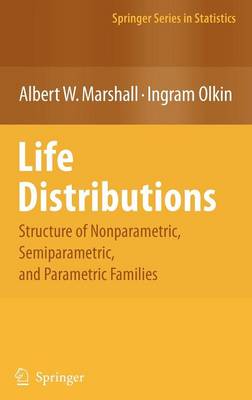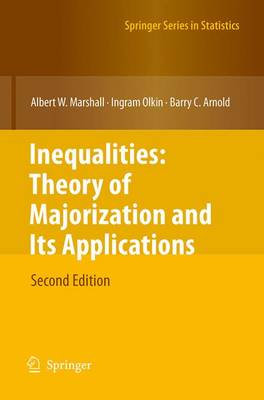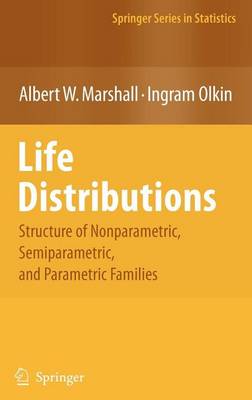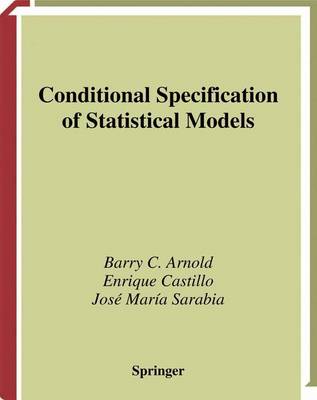Springer Series in Statistics
4 total works
This book is devoted to the study of univariate distributions appropriate for the analyses of data known to be nonnegative. The book includes much material from reliability theory in engineering and survival analysis in medicine.
Inequalities: Theory of Majorization and Its Applications
by Albert W. Marshall, Ingram Olkin, and Barry C. Arnold
Published 3 December 2010
This book’s first edition has been widely cited by researchers in diverse fields. The following are excerpts from reviews. “Inequalities: Theory of Majorization and its Applications” merits strong praise. It is innovative, coherent, well written and, most importantly, a pleasure to read. … This work is a valuable resource!” (Mathematical Reviews). “The authors … present an extremely rich collection of inequalities in a remarkably coherent and unified approach. The book is a major work on inequalities, rich in content and original in organization.” (Siam Review). “The appearance of … Inequalities in 1979 had a great impact on the mathematical sciences. By showing how a single concept unified a staggering amount of material from widely diverse disciplines–probability, geometry, statistics, operations research, etc.–this work was a revelation to those of us who had been trying to make sense of his own corner of this material.” (Linear Algebra and its Applications). This greatly expanded new edition includes recent research on stochastic, multivariate and group majorization, Lorenz order, and applications in physics and chemistry, in economics and political science, in matrix inequalities, and in probability and statistics. The reference list has almost doubled.
Life Distributions: Structure of Nonparametric, Semiparametric, and Parametric Families
by Albert W. Marshall and Ingram Olkin
Published 1 January 2007
Conditional Specification of Statistical Models
by Barry C. Arnold, Enrique Castillo, and Jose M. Sarabia
Published 14 October 1999
Efforts to visualize multivariate densities necessarily involve the use of cross-sections, or, equivalently, conditional densities. This book focuses on distributions that are completely specified in terms of conditional densities. They are appropriately used in any modeling situation where conditional information is completely or partially available. All statistical researchers seeking more flexible models than those provided by classical models will find conditionally specified distributions of interest.



